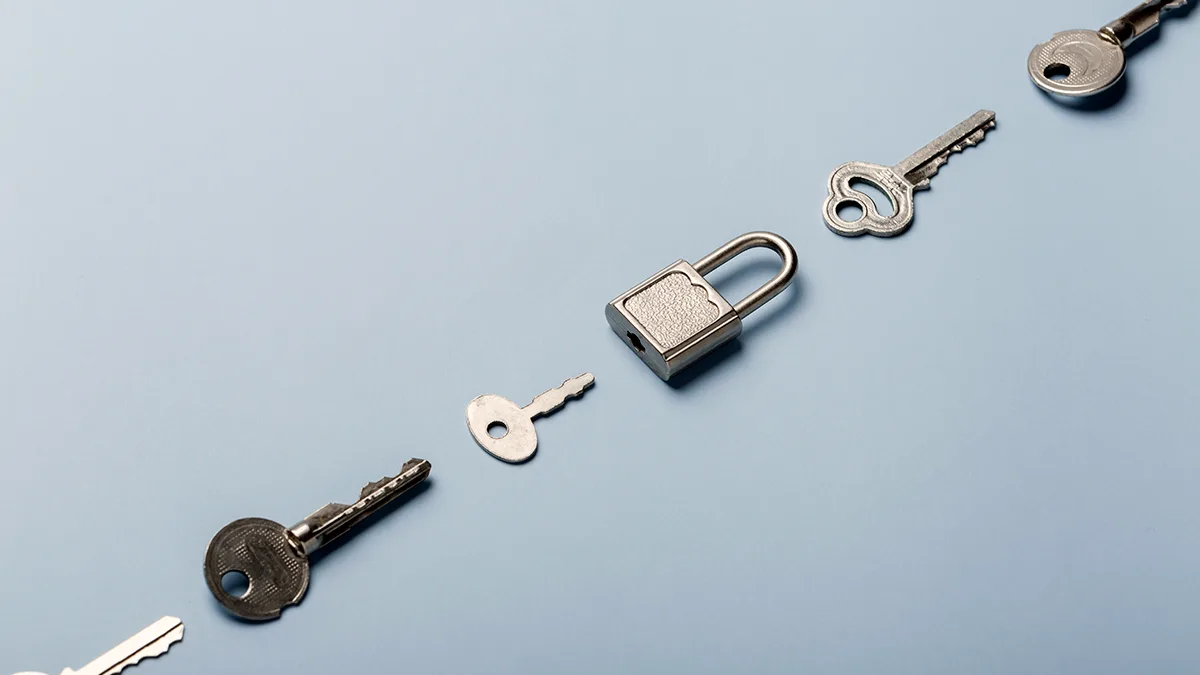The Hidden Costs of DIY Lock Repairs and How to Avoid Them. In a bustling city…
Understanding Lock Bumping: How to Protect Your Property from This Common Threat
Understanding lock bumping: How to protect your property from this common threat. Lock bumping, a covert method of gaining entry to properties, poses a significant threat to the security of both residential and commercial premises.
Understanding Lock Bumping
This technique exploits a vulnerability in traditional pin tumbler locks, making it alarmingly easy for intruders to bypass security measures without leaving a trace.
Understanding the mechanics of lock bumping and how to protect against it is crucial for property owners in London.
In this guide, we will delve into the intricacies of lock bumping, discuss its potential risks, and provide practical solutions to safeguard your property.
Read on to learn how our expert locksmith services can help ensure your peace of mind.
What is Lock Bumping?
Understanding the Basics
 Lock bumping is a technique that involves manipulating the pins inside a pin tumbler lock.
Lock bumping is a technique that involves manipulating the pins inside a pin tumbler lock.
By using a specially crafted key, known as a bump key, intruders can align all the pins simultaneously.
This method works on most traditional locks found in homes and businesses.
The process is alarmingly simple and requires minimal skill or specialised tools, making it a preferred method for thieves.
When the bump key is inserted and struck, the force causes the pins to jump momentarily, allowing the lock to turn freely.
This leaves no obvious signs of forced entry, complicating insurance claims and police investigations.
Understanding this method is the first step in recognising the urgency of upgrading your locks.
With the right knowledge, you can take proactive measures to fortify your property’s security.
Common Lock Types Affected
Pin tumbler locks are the most vulnerable to lock bumping, as this technique specifically targets their internal mechanics.
These locks are commonly found on residential doors, office buildings, and some types of padlocks.
The simplicity and widespread use of pin tumbler locks make them an attractive target for intruders.
Even high-quality pin tumbler locks can be susceptible if they lack specific anti-bumping features.
Additionally, some older models of cylinder locks and basic euro cylinder locks can also be compromised using bump keys.
It’s essential to identify if your property uses any of these lock types.
Knowing this can guide you in deciding whether to upgrade to more secure options, such as anti-bump locks or electronic keyless entry systems.
Recognising the types of locks affected by bumping is crucial for making informed decisions about your property’s security.
The Mechanics Behind Lock Bumping
To understand lock bumping, it’s essential to grasp how pin tumbler locks function.
These locks consist of a series of pins, each divided into two segments: the key pin and the driver pin.
When a correct key is inserted, the pins align at the shear line, allowing the lock to turn.
In lock bumping, a bump key is used. This key is cut to the lowest depth so that it can fit into most pin tumbler locks.
When the key is inserted and struck sharply, the impact causes the driver pins to jump momentarily.
This brief movement aligns all the pins at the shear line, enabling the lock to be turned and the door opened.
The simplicity of this method is alarming. It requires no advanced skills, making it accessible even to amateur thieves.
Understanding these mechanics highlights the importance of upgrading to more secure locks that can resist such techniques.
Risks Associated with Lock Bumping
Vulnerability of Residential Properties
Residential properties are particularly at risk from lock bumping due to the widespread use of pin tumbler locks on front doors and internal access points.
Many homeowners are unaware of this vulnerability, mistakenly believing that traditional locks provide sufficient security.
Unfortunately, this misconception can lead to devastating consequences.
Intruders can exploit these weaknesses with minimal effort, often leaving no visible signs of forced entry.
This not only makes it challenging to claim insurance but also complicates police investigations.
The stealthy nature of lock bumping means that it can happen quickly, providing intruders with easy access to your home and valuables.
To mitigate this risk, homeowners should consider upgrading to anti-bump locks or integrating additional security measures such as deadbolts and smart locks.
Being proactive about your home’s security can significantly reduce the chances of falling victim to this covert technique.
Threats to Commercial Premises
Commercial premises are not immune to the risks associated with lock bumping.
Many businesses rely on conventional pin tumbler locks to secure offices, warehouses, and retail spaces.
The ease with which these locks can be bypassed exposes businesses to significant threats, including theft of valuable assets, sensitive data breaches, and property damage.
Intruders targeting commercial properties often seek high-value items or confidential information, making the impact of a breach particularly damaging.
The stealthy nature of lock bumping means perpetrators can enter and exit without drawing attention, complicating detection and response efforts.
To protect commercial premises, businesses should consider upgrading to high-security locks designed to resist bumping, drilling, and picking.
Additionally, implementing layered security measures, such as surveillance systems and alarm responses, can further deter potential intruders.
Taking these steps can safeguard your business from the growing threat of lock bumping and ensure the continued security of your assets and information.
Real-Life Examples
Real-life instances of lock bumping highlight the seriousness of this security threat.
In London, several cases have surfaced where homes and businesses were discreetly breached using bump keys.
One notable incident involved a small business that lost thousands of pounds worth of equipment overnight.
The police found no evidence of forced entry, initially leading them to suspect an inside job until lock bumping was considered.
In another case, a homeowner returned from holiday to find their house ransacked.
Valuables and personal items were stolen, yet there were no signs of forced entry, perplexing both the homeowner and the authorities.
Subsequent investigations revealed that lock bumping was the method used.
These examples underscore the importance of upgrading security measures to defend against such covert techniques.
Awareness and proactive measures are key to preventing similar incidents and ensuring the safety of your property.
How to Protect Your Property
Upgrading Your Locks
One of the most effective ways to protect your property from lock bumping is to upgrade your locks.
Anti-bump locks are designed with additional security features that make them resistant to such techniques.
These locks often incorporate special pins that are harder to manipulate, providing an additional layer of defence.
Another option is to install high-security locks that meet British Standard BS3621.
These locks are tested against various forms of attack, including bumping, drilling, and picking.
For even more robust security, consider electronic or smart locks, which eliminate the need for traditional keys altogether and offer advanced features like remote access and activity monitoring.
Upgrading your locks not only enhances your property’s security but also provides peace of mind.
Consult with a professional locksmith to assess your current locks and recommend the best options for your specific needs.
Taking these steps ensures that your home or business remains secure against the threat of lock bumping.
Professional Locksmith Services
Enlisting the help of professional locksmith services is crucial for effectively safeguarding your property against lock bumping.
Experienced locksmiths can conduct a thorough security assessment, identifying vulnerabilities and recommending suitable upgrades.
They have the expertise to install high-security locks that are resistant to bumping, drilling, and picking.
Moreover, professional locksmiths stay updated on the latest security technologies and can offer tailored solutions to meet your specific needs.
Whether you require residential or commercial security enhancements, a trusted locksmith can provide reliable advice and quality service.
Engaging a certified locksmith not only ensures proper installation but also compliance with British Standards.
This adds an extra layer of assurance that your locks are both effective and durable.
By relying on expert locksmith services, you can significantly reduce the risk of lock bumping and enhance the overall security of your property.
Additional Security Measures
Beyond upgrading your locks, incorporating additional security measures can further protect your property from lock bumping and other intrusions.
Installing a robust alarm system is an effective deterrent, alerting you and authorities to any unauthorised access.
Modern alarm systems often come with features like motion sensors, door and window contacts, and remote monitoring, providing comprehensive security coverage.
Another valuable measure is the installation of CCTV cameras.
Surveillance cameras can act as a deterrent and provide crucial evidence in the event of a break-in.
Placing cameras at key points, such as entrances and exits, enhances visibility and security.
Consider reinforcing doors and windows with security bars or grilles, especially in vulnerable areas.
These physical barriers add an extra layer of protection, making it more challenging for intruders to gain entry.
By combining upgraded locks with these additional security measures, you can create a robust defence system, significantly reducing the risk of lock bumping and other security threats.




Comments (0)